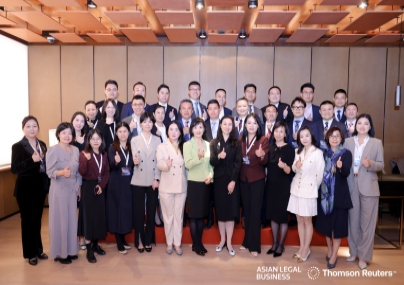
中国的律师人数已经超过53万,伴随法律服务市场欣欣向荣,低价竞争问题也日益浮现,冲击甚至重塑着整个法律服务版图。
张建来律师是阳光时代律师事务所广州办公室执行主任,这家律所多年来专注于能源、环境和基础设施领域专业服务。最近几年张律师发现,一些最初收费能达到十几万的新能源领域投资并购项目,现在有些市场报价已经降到了两三万,“甚至连差旅费都不够”。
这样的现象不仅存在于华南市场。中伦文德胡百全联营律师事务所主任林威律师告诉ALB,在他们参与的东北、华北、华东等项目中,低价竞争同样存在,“包括国外也一样,在一些海外项目里,魔圈律所的报价有时候比我们还低”。
两位律师指出,低价竞争问题最严重的专业领域往往是那些相对成熟、容易标准化的板块,例如常法、常规尽调、IPO、债务重组、并购、劳动用工等。“哪个所都能做的,面临的价格竞争就越激烈。”张建来律师说。
韩进文律师是己任律师事务所知识产权领域专家,他指出,在“知识产权法律市场,近年来价格战也更加普遍”。谈及原因,韩律师认为,一是因为法律服务的特性,“不是可视、可感知的商品”,在服务前或初期很难让客户看出质量高低;二是许多律师在宣传上不到位,无法真实展示能力,导致自己陷入“价格被动-低价赢得客户-无法提供好服务”的不健康循环中。
成因复杂
“价格战”一词虽然听起来具有不良竞争的意味,但律师们指出,其背后成因复杂,甚至并非一定是法律市场不健康的指标。
在林威律师看来,低价竞争某种程度上反映了市场的自然规律。“很多法律业务新出现的时候往往是蓝海,三五年后就变成红海,导致价格战或‘内卷’。加之这两年整体经济降缓,新业务产生得比较少,市场总量扩大也不多,从蓝海到红海的时间就更短。”
与此同时,中国法律市场定价机制的变化也是重要原因。张建来律师指出,原来各省市价格主管部门都有针对法律服务收费的指导价,“这几年为了更多让市场去做选择,逐渐取消了指导价,不再有原来那么明确的收费标准”。另一方面,最近几年党政机关、国企,甚至一些大型外企、民企都采取招标方式选择律师,“很多都按照最低价成交……进一步加剧了价格战”。
林威律师对招投标带来的价格影响也深有感触。他告诉ALB,经过几次招投标,他们发现很多大所的报价甚至比中小所还低,“我们有时的报价也只能根据市场适当降低”。
大所给出低报价的行为似乎突破了惯常理解,但林威律师指出,背后的逻辑其实很简单。“大所将此作为一种策略。尤其遇到国企央企或大项目的时候,大所考虑的更多是占有市场,而非利润率。特别是大型公司制事务所,很容易调动内部资源,这类大项目用来做战略,其他项目则提高收费,总体营收还是可以持平。”
这还带来了意想不到的结果。“大所一直采用这种策略,在市场占有的份额就能够一直领先,但很多中小所吃不消这个。”林律师坦言,“也是因为这样,现在很多地方所纷纷加入北京、上海的大所,因为大家都在里面尝到甜头,或不这么做,则吃到苦头了。”
“就看你选择的市场定位到底是差异化,还是低价。这两个其实没有谁好谁坏,是自己的市场策略(选择)。”一位不愿具名的律师告诉ALB,“例如现在有的律所的破产业务,已经开始招非法律专业的人,因为要去蹲点,这类人力比较便宜。IPO也是,有的所大量使用小朋友来铺人力。但也有人专门做重大争议解决,收费很贵,走的就是差异化路线:我搞得定你搞不定嘛。”
如何应对
低价竞争显然给律师带来伤脑筋的压力,但他们对此也保持着冷静。“价格战不可避免,在任何行业都一样。”张建来律师说,“只能去适应,去扬长避短。”
“我还是选择坚持合理的收费标准。”面对竞争压力,韩进文律师认为还是要有所为有所不为,“同时尽可能多做前期准备,让客户认识到法律服务的价值。”
林威律师指出,和容易批量作业的项目相比,有些法律服务天然具备抵抗低价竞争的能力。例如“疑难诉讼案件……我们参加过一些大型诉讼招标,它有一个综合评分系统,会考虑方案的可行性、团队优势、团队以往的经验、目前团队在本项目里的参与人数等,进行综合评分,报价只占30%左右的比重,就很难产生价格内卷”。
此外,律所也要能够更聪明地调配资源。例如中伦文德,在地域上,“我们会从沿海向中西部做拓展,很多成熟的业务可能在沿海是内卷,但到了中西部就变成稀缺”;在调配内部资源上,中伦文德借助全国20余家分所,让沿海和中西部分所展开合作,“把劳动密集型业务放在中西部,技术密集型放在沿海,进行联合招投标,使成本和报价都降下来”。
就像投资人通过不断寻找新行业增强差异化优势,张建来律师也提出了法律服务“赛道”的概念:“紧跟社会和市场的变化,针对客户在新领域遇到的疑难复杂法律问题提供服务,相对来说从业者比较少,能够避免恶性竞争。”
他举了阳光所的例子:传统电力企业常年法律顾问、新能源项目投资并购等服务价值提升空间已经不大,“现在我们更多关注碳中和、碳交易等新兴行业,往更前沿的领域拓展;另外从事环境公益诉讼、环境行政处罚、环境合规等领域律师还不很多,阳光所具有明显的竞争优势,更有议价空间。”
在韩进文律师看来,低价竞争的出现也给律师本身带来提醒,“要不断提高自己的能力。在保持法律专业性的同时,不断学习商业知识以及宣传技巧,深入了解客户的商业模式和真正需求,找到切实可行的解决方案,并能够充分地向客户展示”,他总结道。
林威律师对此表示赞同:“我们可能没办法也没有精力去盲目跟风市场的变化,关键要不断自我改善,做好业务本身,外界的干扰因素自然会下降。”
As China’s legal industry sees consolidation driven by undercutting, firms look to innovation to stay competitive
There is a price war on in China’s legal industry. As the market expands and matures, law firms are undercutting each other furiously, in a way that could reshape the entire legal services landscape for good.
Zhang Jianlai is the executive director of Sunshine Law Firm’s Guangzhou office, which specializes in the energy and environmental work. He says that in the past year, fees charged by firms for investment and M&A projects in the new energy sector have dropped dramatically. For example, for certain types of projects, law firms would have charged upwards of 100,000 yuan ($15,500), but today there are firms willing to do the work for 20,000 to 30,000 yuan, which "can't even cover the travel expenses."
Other regions are also seeing the same scenario unfolding. Lin Wei, director of P.C. Woo & Zhonglun W.D., tells ALB that it has to deal with competitors undercutting them on projects in Northeast China, North China, and East China. "It's the same even in overseas projects. In some projects, the price quotations of some Magic Circle law firms are even lower than ours," says Lin.
So what’s causing this competition over price? Lin mentions market maturity as one factor. “Many new legal sectors are blue oceans at the beginning, become red oceans after three to five years, and then price wars start. Given the overall economic slowdown in the past two years, the time period for a blue ocean to a red ocean is even shorter."
Another factor, says Zhang, is changes to the pricing mechanism of China's legal market. In the past, local governments implemented guideline prices for legal services, which "had been gradually cancelled in recent years as an attempt to leave the choices to the market." Moreover, government agencies, state-owned enterprises, and even some large private enterprises now procure legal services through tenders and competitive bidding, "many of which conclude with the lowest price offered ... which further intensifies the price war," Zhang points out.
That leads to a race to the bottom. Lin tells ALB that in some tenders the firm has participated in, the quotations of many “big names” were even lower than those of the small and medium-sized firms. In those cases, "we had to lower our quotations."
LARGER FIRMS CAN ABSORB COSTS BETTER
Lin and Zhang feel that the kinds of work where the price competition is strongest are the relatively mature and commoditized ones in which the processes can be standardized, perhaps even automated. These include basic legal advisory, conventional due diligence, IPOs, debt restructuring, mergers and acquisitions, labour and employment, and intellectual property rights. "The price competition in those areas is more intense as they are regular practice areas of all firms," Zhang says.
On the face of it, it might be surprising to witness lowballing from high-end firms. But Lin says that is part of a calculated approach. "Large firms take it as a strategy, in particular when it comes to projects of state-owned enterprises or large projects – large firms want to capture a greater market share rather than profit margin. Also, larger firms have the breadth and diversity brought about by scale that enables them to absorb costs if need be. “For large corporate-type law firms, it's easy for them to rearrange their resources. On one hand, they implement low price strategy for those large projects to occupy the market share; on the other hand, they raise fees for other projects to maintain their overall revenues," Lin says.
He adds that this is leading to gradual consolidation of the market. "While large firms occupy greater market shares by implementing low price competition strategy, it's hard for small and medium-sized firms to stay profitable in price war," Lin says. "And it is why many small and medium-sized firms now choose to become local branches of large firms from Beijing and Shanghai."
WHEN THEY GO LOW, WE INNOVATE
The undercutting isn’t going to stop any time soon, and law firms are beginning to look at other ways that they can differentiate themselves, instead of price alone. One approach is to be very good in areas where price is not the deciding factor. "Take complex litigation cases as an example, says Lin. “In some tenders for high-profile litigation cases we participated in, they implement a comprehensive rating system to evaluate the feasibility of the plan proposed, advantages and experiences of a team, the number of team members on the project, etc. The quotation only accounts for about 30 percent of the overall rating of a firm,"
Sunshine Law Firm, on the other hand, is exploring more specialized fields such as carbon neutrality and carbon trading. “Moreover, given there currently aren't many lawyers specializing in environmental public interest litigation and environmental compliance, it gives us advantages in price negotiations," says Zhang.
Law firms also need to be able to allocate their resources in smarter ways, notes Lin. P.C. Woo & Zhonglun W.D. "has been expanding its business from the coastal areas to the central and western regions as many of our mature services may see involution in the coastal areas, but are badly needed in the central and western regions." In terms of deployment of internal resources, the firm "carries out labour-intensive businesses in the central and western offices, and skill-intensive businesses in the coastal areas, and conduct joint bidding to reduce costs and lower quotations," Lin says.
Another lawyer who asked not to be named said that “some firms have started to recruit non-legal staff for their bankruptcy business. In this way, they can save cost on manpower for on-site operations. Some firms also hire many young associates as auxiliary staff to help with IPO projects for the same reason."
KEEP CALM AND CARRY ON
Another important strategy is to adopt the mindset that “price wars are inevitable in all industries,” as Zhang puts it, and legal is no exception. Lawyers need to “stay competitive only by adapting to the changes."
Han Jinwen, an intellectual property expert at GEN Law firm, believes that "firms should adopt a reasonable fee standard no matter what. Meanwhile, we should endeavour to deliver quality services to clients and show our clients the value derived from our services."
In Han's opinion, low price competition or price war can be a reminder for lawyers that "we must constantly improve our capabilities. In addition to legal expertise, we should continue to learn business knowledge and publicity skills, to demonstrate our value to the clients."
Lin agrees: "Honestly, we don't have the energy to study the real ups and downs of the market. What we need to do is making improvements internally to sharpen our competitive edge, such as offering better services and giving better customer experiences, and then naturally, the impact of external factors on our business will decrease."
To contact the editorial team, please email ALBEditor@thomsonreuters.com.


